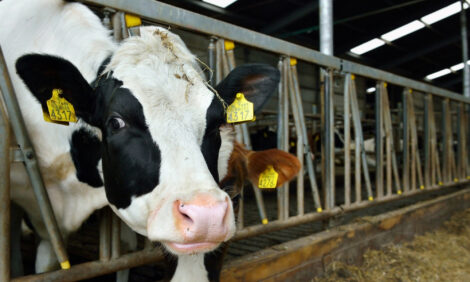



OFC - What Strategies are Needed to Feed a Growing Population?
UK - Sustainable intensification strategies to give greater production but with a lower environmental impact will be necessary to meet the rising demand for food, as the world population grows and the effects of climate change are felt.Dr Bram Govaerts, the associate global director of CIMMYT’s Global Conservation Agricultural Program, giving the Frank Parkinson Lecture at the Oxford Farming Conference, said the strategies had to be based on sound agronomy, crop science and new technologies tailored to the needs of small farmers whose resources are constrained.
The strategy must be able to produce more food on less resources and the consumer of the future will want to know that the piece of meat or food being eaten has been produced with high welfare, no deforestation, no child labour and a low carbon footprint.
Dr Govaerts said that risk strategies need to be formed to mitigate the effects of different weather and climate conditions such as the drop in wheat production caused by the effects of El Niño, or crop losses due to floods in the US.
He said that global markets and banks do not show concern because of price rises for maize or rice or a humanitarian crisis, but when there are stock market losses.
However, he told the conference that more needs to be done to develop sustainable farming practices to fight hunger and poverty across the developing world.
Research and energy needs to be focused on developing high yielding, disease resistant crops as well as agronomic innovation to ensure that the best use is being made of poor resources.
“Growing improved crops without agronomy is like running a Ferrari on a gravel road,” Dr Govaerts said.
“You are not going to be able to realise the full potential of the crop, or the engine, if you will, without sustainable farming practices.”
He added: “Almost every farmer in Mexico and other countries around the world has a mobile phone.
“Why not develop an application that helps these farmers estimate optimal fertiliser doses for their plots of land?”
He said there was a need to connect research back to the farmers’ efforts.
There is a need to understand the different agricultural and farming processes around the world and to develop systems that are appropriate and easy to use for farmers in the developing countries.
“Sometimes the answer to food security is not to produce more but to produce more efficiently and to reduce food losses,” said Dr Govaerts.
He said that to help with this, his organisation CIMMYT has developed 16 prototypes of smart machinery adapted to different scales, from consumption to commercial agriculture.
The organisation has also developed postharvest technologies to reduce losses in places where farmers have little or no access to storage facilities.
“He said the action that is being taken by organisations such as his to develop new technologies and sustainable practice needs to be backed by governments and public bodies.
“We have to prepare the terrain and invest in small and family farming to increase agricultural productivity and market access across the world to achieve the production gains we need to feed a growing and wealthier population,” he said.



